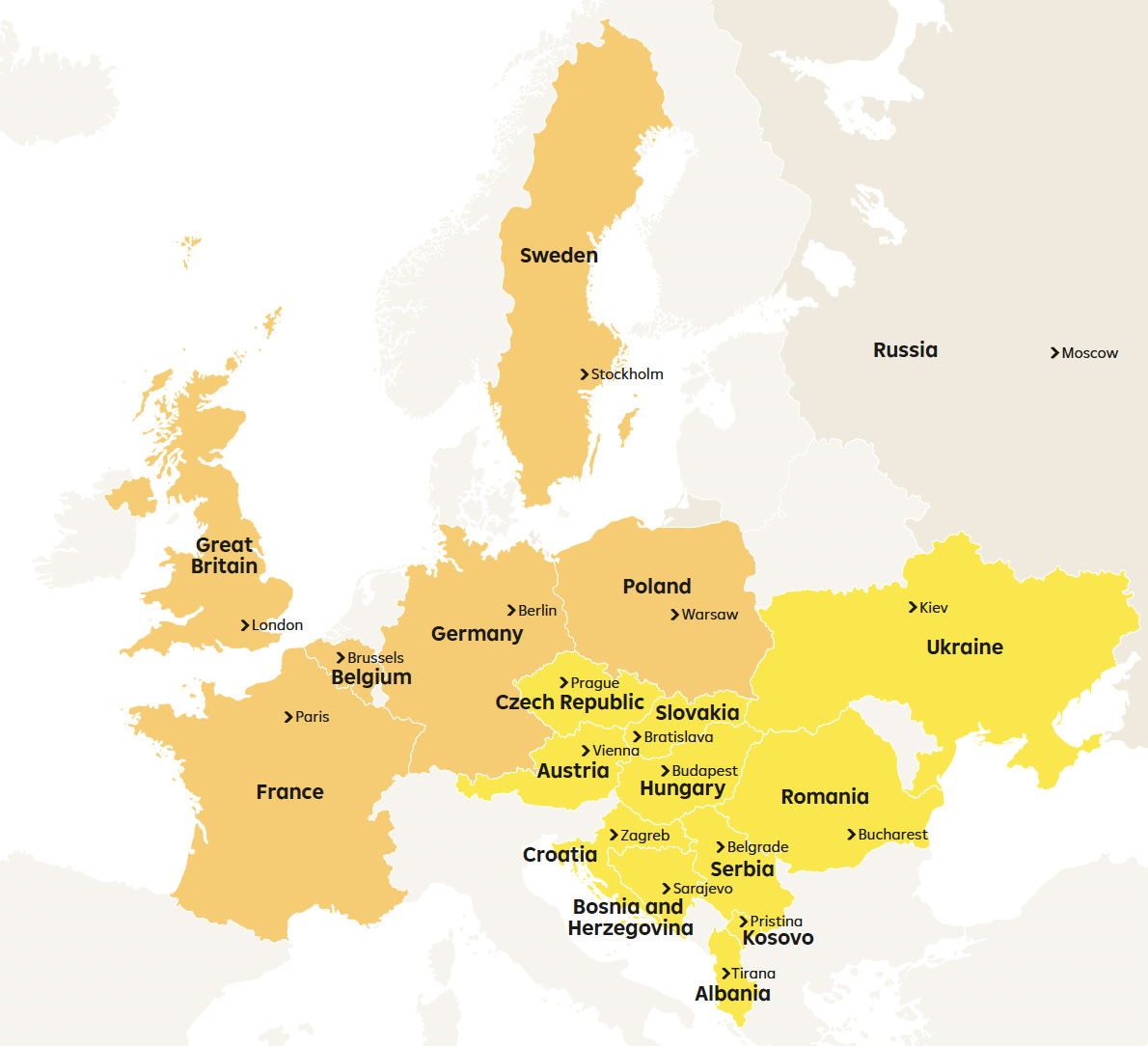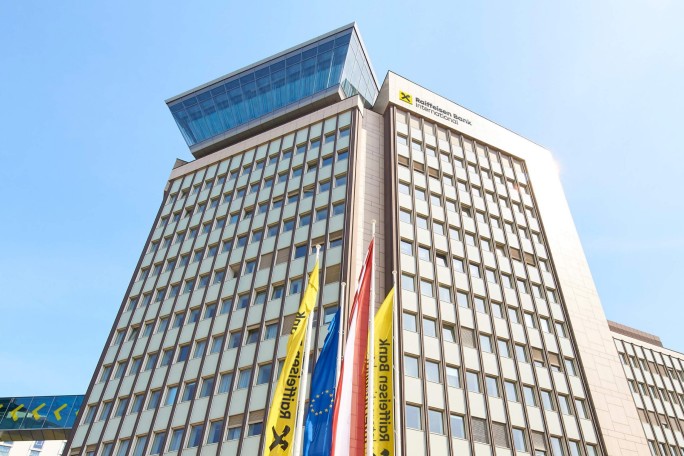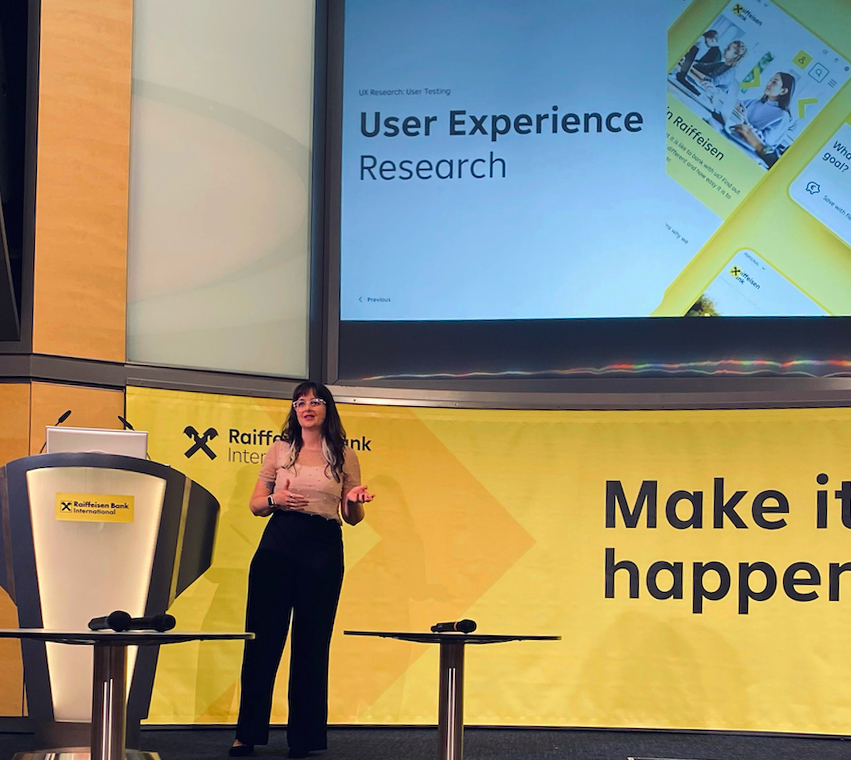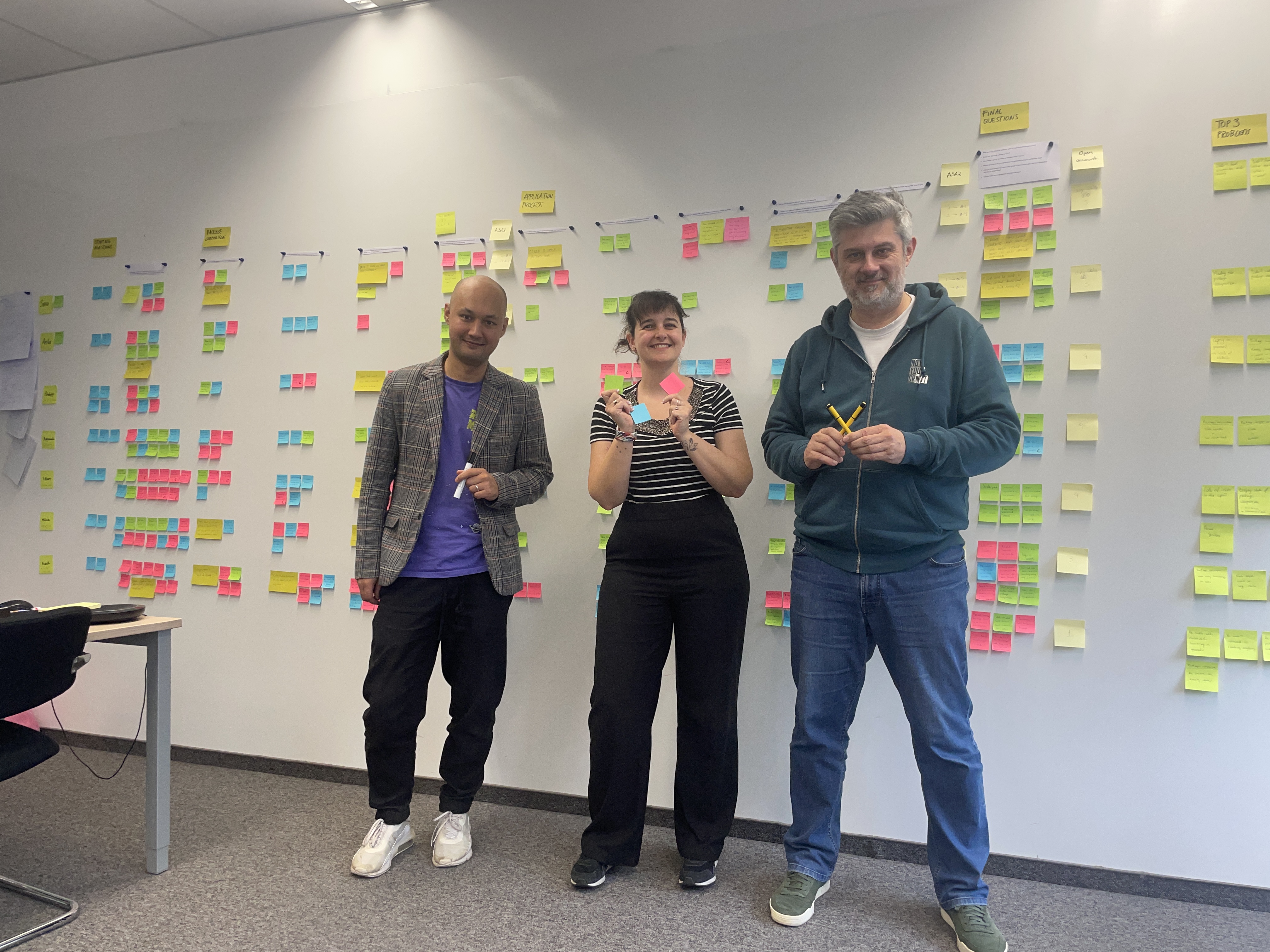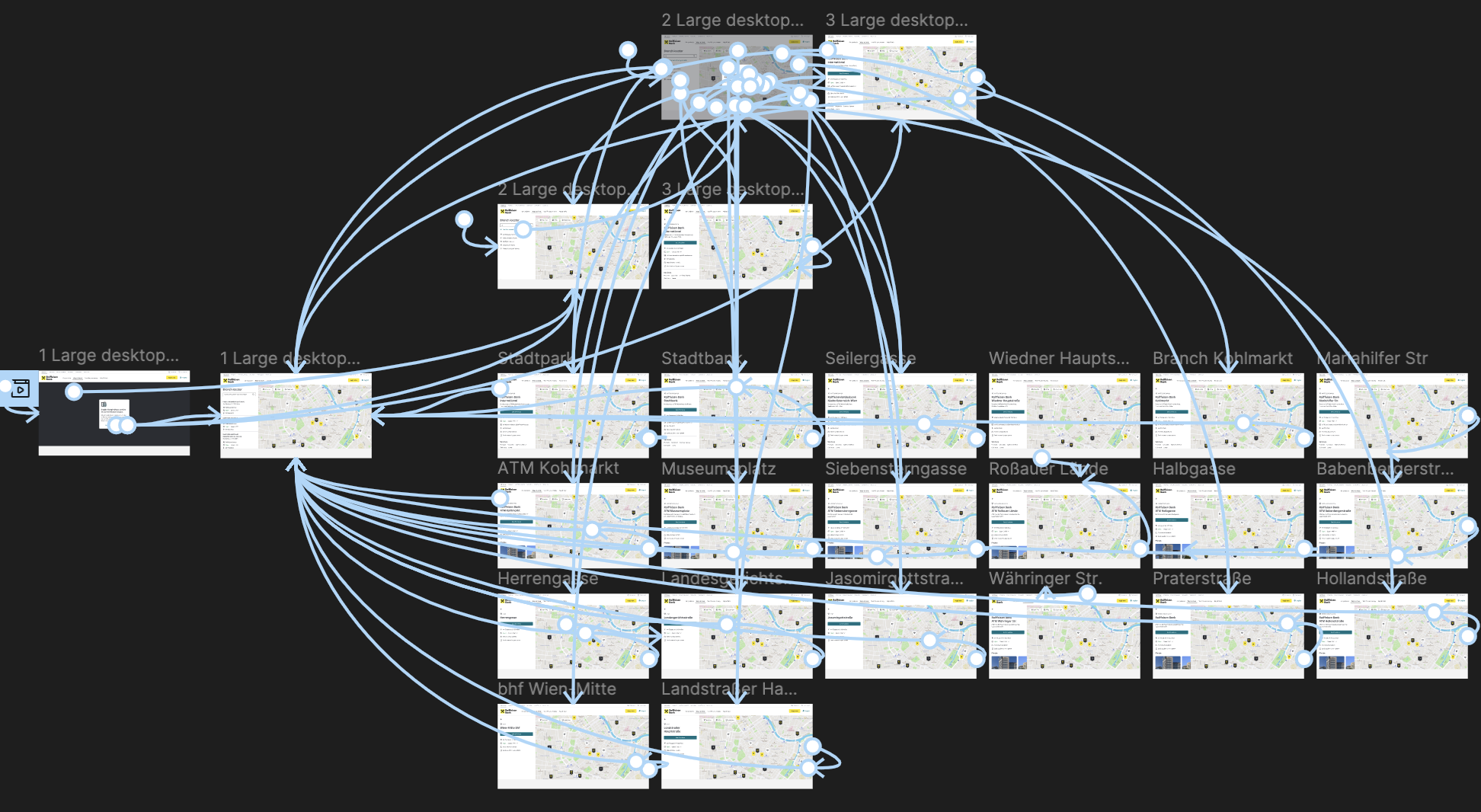6. Content strategy and UX/UI
As part of the CMS project, we formed a dedicated task force that brought together UI design, UX research, and content strategy.
Recognising that good UX goes beyond just the interface, we worked closely with the content strategy team to co-develop page blueprints from scratch, ensuring both design and messaging were aligned from the beginning.
Importantly, we tested early—before development began—which allowed us to validate core assumptions and make meaningful improvements without costly rework.
Our research included both targeted functionality tests (such as loan calculators or location maps) and broader content flow evaluations, like full-page prototypes on topics such as currency exchange and international transfers. We looked at whether users could interpret graphs, understand available features, and identify key information with ease.
To explore this, we built highly interactive Figma prototypes with components like tabs, sliders, carousels, and quick-start navigation.
These simulations allowed users to explore features like goal-based savings flows, tailored for different audience needs.
All tests were conducted via UserTesting remotely, covering both desktop and mobile experiences. This helped us gather rich insights across markets efficiently, even under pandemic restrictions.
